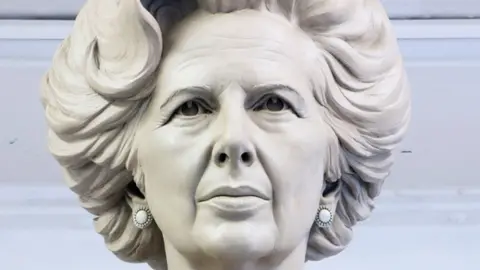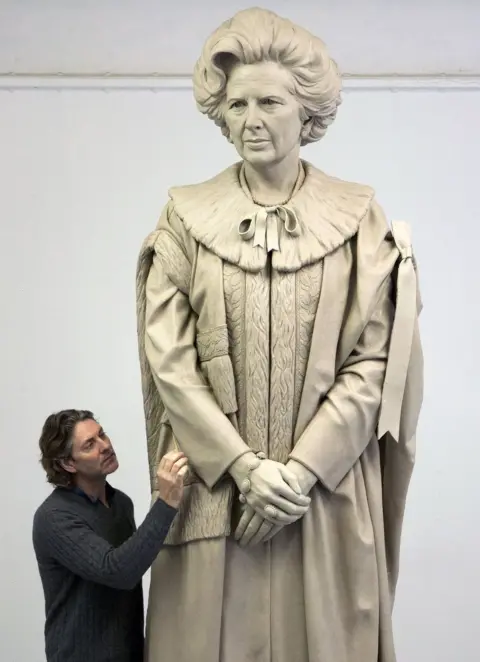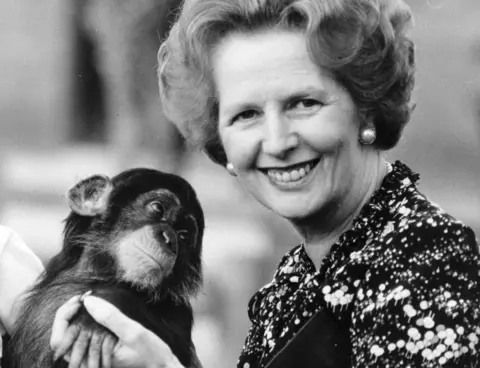Margaret Thatcher statue 'needs protecting from vandals'
 PA
PAA proposed statue of Margaret Thatcher in her home town of Grantham will require a high plinth to curb the threat of vandalism, police have said.
A report to South Kesteven District Council states the sculpture could be "a target for politically-motivated vandals".
Lincolnshire Police has recommended the statue is placed on a sufficiently high plinth to ensure no-one can climb it.
The force also recommends it be placed in a well-lit area with CCTV.
Plans to install the £300,000 statue of the former prime minister will be voted on on Tuesday.
A report to the council said: "The divisive nature of Baroness Thatcher due to her political career and policy legacy and the potential for this to result in vandalism has been raised as a concern.
"In general there remains a motivated far-left movement across the UK (though not so much in Lincolnshire) who may be committed to public activism."
However, the report added that "the passage of time does seem to have diminished that intensity of feeling".
Supporters, including Grantham Community Heritage Association (GCHA), which runs the town's museum, said the statue was a "fitting tribute to a unique political figure".
It also said it would encourage visitors to the town "from both sides of the debate".
 PA
PAThe work, which is currently said to be in storage at "a secret location", will be placed in St Peter's Hill if approved.
The sculpture previously received support from Prime Minister Theresa May, and was offered to Grantham last July after the original plans for it to be erected in London were rejected.

 Getty Images
Getty Images- Margaret Hilda Thatcher was born on 13 October 1925 in Grantham, Lincolnshire, the daughter of Alfred Roberts, a grocer, and his wife, Beatrice
- Her father, a Methodist lay preacher and local councillor, had an immense influence on her life and the policies she would adopt
- She attended Kesteven and Grantham Girls' School, but left in 1943 to start a four-year chemistry degree at the University of Oxford. She then moved to Colchester to work as a research chemist
- First stood for Parliament in the 1950 election and was elected as Conservative MP for Finchley in 1959
- Defeated Ted Heath in Tory leadership contest in 1975
- Became the UK's first female prime minister after the Conservative election victory in 1979